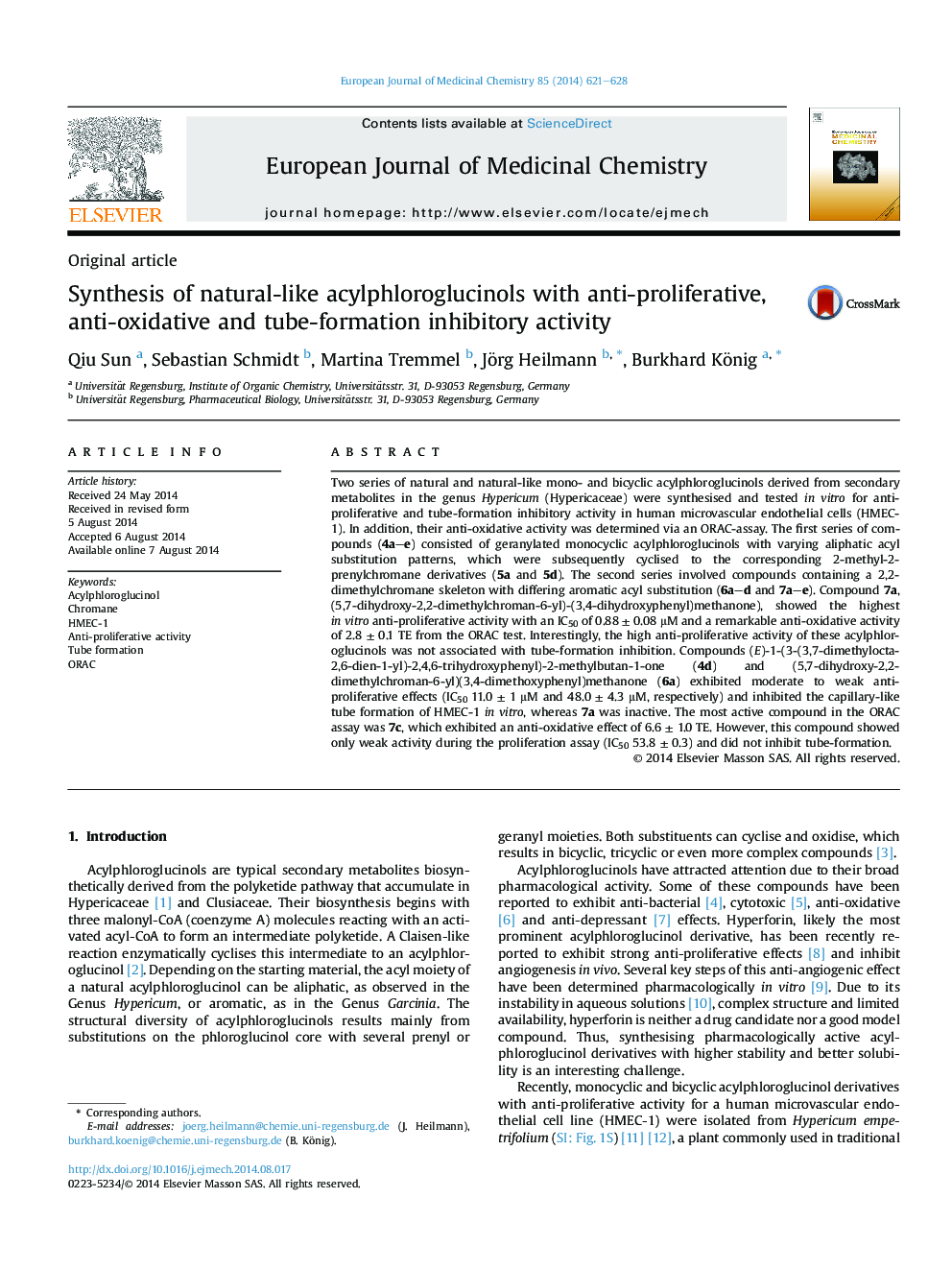| Article ID | Journal | Published Year | Pages | File Type |
|---|---|---|---|---|
| 1392352 | European Journal of Medicinal Chemistry | 2014 | 8 Pages |
•Mono- and bicyclic acylphloroglucinols with varying acyl-chains were synthesized.•Compound 7a showed anti-proliferative activity in HMEC-1 with an IC50 of 0.88 ± 0.08 μM.•Compound 7c showed high anti-oxidant activity in ORAC assay with 6.6 ± 1.0 TE.•Compound 4d inhibited capillary-like tube formation of HMEC-1 in vitro.
Two series of natural and natural-like mono- and bicyclic acylphloroglucinols derived from secondary metabolites in the genus Hypericum (Hypericaceae) were synthesised and tested in vitro for anti-proliferative and tube-formation inhibitory activity in human microvascular endothelial cells (HMEC-1). In addition, their anti-oxidative activity was determined via an ORAC-assay. The first series of compounds (4a–e) consisted of geranylated monocyclic acylphloroglucinols with varying aliphatic acyl substitution patterns, which were subsequently cyclised to the corresponding 2-methyl-2-prenylchromane derivatives (5a and 5d). The second series involved compounds containing a 2,2-dimethylchromane skeleton with differing aromatic acyl substitution (6a–d and 7a–e). Compound 7a, (5,7-dihydroxy-2,2-dimethylchroman-6-yl)-(3,4-dihydroxyphenyl)methanone), showed the highest in vitro anti-proliferative activity with an IC50 of 0.88 ± 0.08 μM and a remarkable anti-oxidative activity of 2.8 ± 0.1 TE from the ORAC test. Interestingly, the high anti-proliferative activity of these acylphloroglucinols was not associated with tube-formation inhibition. Compounds (E)-1-(3-(3,7-dimethylocta-2,6-dien-1-yl)-2,4,6-trihydroxyphenyl)-2-methylbutan-1-one (4d) and (5,7-dihydroxy-2,2-dimethylchroman-6-yl)(3,4-dimethoxyphenyl)methanone (6a) exhibited moderate to weak anti-proliferative effects (IC50 11.0 ± 1 μM and 48.0 ± 4.3 μM, respectively) and inhibited the capillary-like tube formation of HMEC-1 in vitro, whereas 7a was inactive. The most active compound in the ORAC assay was 7c, which exhibited an anti-oxidative effect of 6.6 ± 1.0 TE. However, this compound showed only weak activity during the proliferation assay (IC50 53.8 ± 0.3) and did not inhibit tube-formation.
Graphical abstractFigure optionsDownload full-size imageDownload as PowerPoint slide
